Retirement Plan Perspectives: Insights for Your Plan and Employees
New White Paper Explores Life, Longevity, and Retirement for Future Workers
As a plan sponsor, you spend much of your time helping Gen Z, millennials, Gen X, baby boomers, and other segments of your workforce achieve positive retirement outcomes. Prudential’s recent white paper, “Generation Beta; Redefining Life, Longevity, and Retirement,” explores the anticipated experiences of individuals born between January 1, 2025, and December 31, 2039. Generation Beta is expected to navigate a world characterized by rapid technological advancements, shifting societal norms, and evolving economic landscapes.
Life: Predictions for Generation Beta
Technological integration is projected to be a defining aspect of Generation Beta’s existence. More than half of respondents (58 percent) believe technology will enhance their lives, with 54 percent anticipating that artificial intelligence and robotics will develop empathetic interactions with humans. Family structures are also expected to transform, as 86 percent of respondents foresee the decline of traditional nuclear families, and 68 percent predict that Generation Beta will prioritize pet ownership over having children. In the professional realm, 80 percent expect individuals to pursue multiple (more than three) distinct career paths, and 86 percent believe many of these future jobs have yet to be invented.
Longevity: Preparing for Extended Life Spans
Advancements in health care and technology may significantly extend life expectancy for Generation Beta. More than half of the respondents (51 percent) are optimistic about the potential eradication of cancer. However, only 40 percent believe that obesity will be eliminated, indicating skepticism about addressing lifestyle-related health issues. Financial prospects appear mixed; although 55 percent think Generation Beta will be wealthier than their predecessors, 61 percent anticipate greater financial uncertainty. To navigate these complexities, there is an emphasis on equipping this generation with practical skills and financial literacy, combining technological education with experiential learning.
Retirement: Evolving Concepts of Work and Leisure
The traditional notion of retirement is expected to undergo significant changes for Generation Beta. A fluid approach to retirement is anticipated, with 66 percent predicting that individuals will cycle in and out of retirement phases throughout their lives, influenced by longer life spans and changing work patterns. Notably, 48 percent of current and prospective parents believe their children may never fully retire. Financial preparedness is a concern, with estimates suggesting that approximately $1.88 million will be necessary to sustain a comfortable retirement, reflecting the challenges posed by increased longevity and economic volatility.
Prudential: “Generation Beta: Redefining Life, Longevity, and Retirement” (January 2025).
Key Ingredients
A Recipe for a Hearty Investment Policy Statement
When serving up a retirement plan to your employees, your investment policy statement (IPS) is the secret sauce. A well-crafted IPS outlines the guiding principles for choosing and managing plan investments, helping ensure that a broad and diverse menu of options is available. It’s also a fiduciary best practice — although not required by law, the IPS is one of the primary documents the Internal Revenue Service and U.S. Department of Labor request when they conduct plan audits. Here are some of the key ingredients that can help make your IPS a recipe for success:
- Plan objectives: Your flavor profile. This section explains why the retirement plan exists and how it will serve employees. It also describes the plan’s investment goals. Think of it as the “flavor profile” that guides every decision.
- Roles and responsibilities: The kitchen crew. Define who’s responsible for what. From the plan sponsor and investment committee to the plan advisor, everyone in your “kitchen” should know their role. In particular, the IPS should spell out who has discretion in terms of making investment decisions when changes to the investment lineup are indicated.
- Eligible investments: The main course. An IPS should outline the investments that the investment committee believes are appropriate for your plan and the methodology for choosing them. This may include investment options like target-date funds, managed accounts, and collective investment trust funds. Also likely to be included are all nine combinations of large-, mid- and small-capitalization mutual funds spread across the value, blend, and growth spectrum.
- Performance monitoring: Taste testing. Establish criteria to regularly review and evaluate investment performance, including appropriate benchmarks for comparison. Think of this as your “taste test” to ensure that every ingredient is working as intended. The criteria, rationale, and action steps for removing an investment option from the plan are also included here.
- Qualified default investment alternatives: A flavor enhancer. These alternatives offer plan fiduciaries safe-harbor protection from certain risks associated with default investments. This section explains the characteristics that a plan investment must have to qualify as a qualified default investment alternative. Target-date funds, a common investment choice within retirement plans, have become the typical qualified default investment alternative choice for plan fiduciaries.
- Review and amendments: The recipe tweaks. Commit to revisiting and updating your IPS periodically. Just like a favorite recipe, your IPS should evolve to reflect changing tastes and circumstances.
Russell Investments: “Elements of a Clearly Defined Investment Policy Statement for Defined Contribution Plans” (accessed January 2025).
Web Resources for Plan Sponsors
- Internal Revenue Service, Employee Retirement Plans: irs.gov/ep
- U.S. Department of Labor, Employee Benefits Security Administration: dol.gov/ebsa
- 401(k) Help Center: 401khelpcenter.com
- PLANSPONSOR Magazine: plansponsor.com
- BenefitsLink: benefitslink.com
- Plan Sponsor Council of America: psca.org
- Employee Benefit Research Institute: ebri.org
Pension Plan Limitations for 2025
- 401(k) maximum elective deferral……………………. $23,500
- For those age 50 to 59 or 64 or older………..$31,000
- For those age 60‒63, if plan permits)* ……..$34,750
- Defined contribution maximum annual addition..$70,000
- Highly compensated employee threshold………….. $160,000
- Annual compensation limit ………………………………$350,000
*Under a change made in SECURE Act 2.0, a higher catch-up contribution limit applies for employees aged 60‒63 based on age at the end of the calendar year. For 2025, this higher catch-up contribution limit is $11,250 instead of $7,500, for a potential total contribution of $34,750.
Plan Sponsors Ask . . .
Q: How often should we benchmark our plan fees?
According to Callan’s 2024 DC Trends Survey, two-thirds of plan sponsors were either somewhat or very likely to conduct a fee study in 2024. As a result, nearly half of plan sponsors were able to reduce their plan fees. As a fiduciary, plan sponsors are responsible for ensuring that the services provided to their plans are necessary and that the cost of those services is reasonable (but not necessarily the lowest). Conducting a plan fee benchmarking exercise on an annual basis is generally considered to be prudent. Your plan advisor can quarterback these exercises to help ensure that your plan is cost-effective given the services used.
Q: Are you aware of any new topical focus areas for financial wellness?
The Institutional Retirement Income Council’s annual forecast of key retirement industry trends for 2025 anticipates more robust preretirement education and planning programs. The organization suggests that preretirement modules will comprise personalized planning tools for retirement income projections (including integrating non-defined-contribution plan retirement income sources); education about social security and Medicare; and budgeting and tax planning for life after retirement — as well as opportunities to accumulate additional savings before retirement. The preretirement programs will likely be offered to employees at earlier ages (age 50+), so the employee has significant time to plan and act before retirement.
Q: We are planning to promote health savings accounts to our employees as a means of funding future health care expenses in retirement. Is there any data around the use of these accounts as a long-term savings vehicle?
Given the triple tax-free status of health savings accounts, it’s a great idea to promote their potential for growth over the long term to help pay for health care expenses in retirement — including Medicare premiums. According to Bank of America’s Q3 2024 Participant Pulse, just 14 percent of health savings account holders invest for growth. To help you with targeting your campaign, 19 percent of men invest for growth (versus 13 percent of women). In addition, baby boomers (17 percent) invest in health savings accounts for growth more than any other generation.
Plan Sponsors’ Quarterly Calendar
July
- Conduct a review of second-quarter payroll and plan deposit dates to ensure compliance with the DOL’s rules regarding timely deposit of participant contributions and loan repayments.
- Verify that employees who became eligible for the plan between April 1 and June 30 received and returned an enrollment form. Follow up on forms that were not returned.
- Ensure that the plan’s Form 5500 is submitted by July 31, unless an extension to file applies (calendar-year plans).
August
- Begin preparing for the distribution of the plan’s Summary Annual Report to participants and beneficiaries by September 30, unless a Form 5500 extension to file applies (calendar-year plans).
- Provide a quarterly benefit/disclosure statement and statement of fees and expenses that were charged to individual accounts to participants (due 45 days after the end of the quarter).
- Submit employee census and payroll data to the plan’s recordkeeper for midyear compliance testing (calendar-year plans).
- Confirm that participants who terminated employment between January 1 and June 30 elected a distribution option for their plan account balance and returned their election form. Contact those whose forms were not received.
September
- Begin preparing the applicable safe harbor notices to employees, and plan for distributing the notices between October 2 and December 2 (calendar-year plans).
- Distribute the plan’s Summary Annual Report by September 30 to participants and beneficiaries, unless an extension to file Form 5500 applies (calendar-year plans).
- Send a reminder memo or email to all employees to encourage them to review and update, if necessary, their beneficiary designations for all benefit plans.
Consult your plan’s financial, legal, or tax advisor regarding these and other items that may apply to your plan.
This material has been provided for general informational purposes only and does not constitute tax, legal, or investment advice. Although we go to great lengths to make sure our information is accurate and useful, we recommend you consult a qualified professional regarding your situation. Commonwealth Financial Network does not provide tax or legal advice.
© 2025 Commonwealth Financial Network®
Latest News
Retirement Plan Perspectives: Insights for Your Plan and Employees
June 5, 2025
New White Paper Explores Life, Longevity, and Retirement for Future Workers As a plan sponsor, you spend much of your time helping Gen Z, millennials, Gen X,...
READ MORE...5 Financial Habits for Long-Term Success
May 27, 2025
In the world of personal finance, it’s not just about how much you earn; it’s about how you manage what you have. Whether you’re fresh out of college, eye...
READ MORE...How To Start a College Fund Early
May 27, 2025
Presented by Chris Powers We all want to provide the children in our lives with opportunities to succeed. For many families, that includes higher education�...
READ MORE...Loading...







